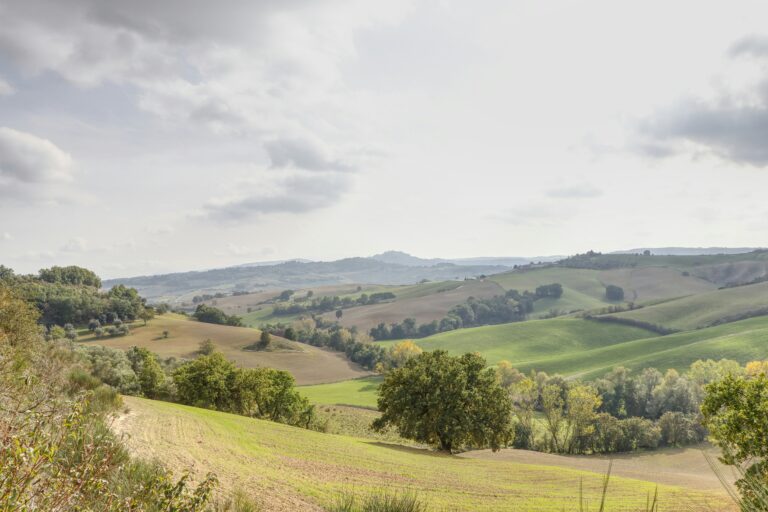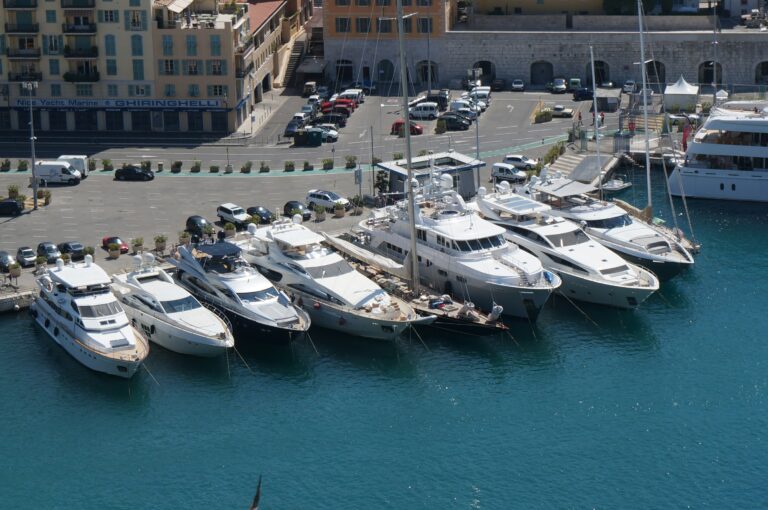Discover a world of timeless hilltop villages, rolling vineyards, bubbling hot springs, and world-class wines nestled along the lesser-known cypress-lined roads of northern Tuscany. When travelers search for “southern Tuscany towns,” they seek an authentic, off-the-beaten-path experience that blends history, landscape, gastronomy, and practical advice into one seamless journey.
In this guide, we will explore the must-visit towns of southern Tuscany, answer the most common questions people have—where to stay, what to eat, and how to get around—and incorporate the most effective LSI keywords to help this post rank and delight your readers.
Thos post contains affiliate links.
Pitigliano, Sovana & Sorano: The Tufa Triangle
Why These “Tufa Towns” Matter
Carved directly into the volcanic tuff rock, Pitigliano, Sovana, and Sorano form a trio often called the “tufa towns” of southern Tuscany. Their etched facades, narrow alleyways, and Etruscan necropolises make them among Italy’s most photogenic and historically rich destinations.
- Pitigliano rises dramatically on a rocky outcrop. Its nickname, “La Piccola Gerusalemme,” recalls the once-thriving Jewish community and its ancient mikveh (ritual bath).
- Sovana feels like an open-air museum: a 12th-century cathedral, medieval palazzos, and Etruscan tombs just outside town.
- Sorano sits serenely in a gorge, with its fortress walls and hillside hamlets connected by inclined stairways.

Stay or Day-Trip?
– Stay: Spending two nights in this area lets you wander empty streets after the day-trippers depart, dine by candlelight in a medieval courtyard, and catch sunrise light on the cliffs. Agriturismi on the valley floors provide rustic comfort and local meals.
– Day-Trip: If your itinerary is tight, you can loop through all three in a long day from Grosseto or Orbetello. Plan at least 30 minutes in each to soak up the atmosphere and visit one key site (e.g., the Orsini fortress in Pitigliano, Sovana’s cathedral, or Sorano’s fortress museum).
Culinary Highlights
- Sovana’s Wild Boar Ragu: Slow-cooked boar served over pappardelle—earthy flavors befitting the oak forests above.
- Pitigliano’s Ricotta-Stuffed Gnocchi (Gnocchi alla Pastora): Drizzled with sage-butter and dusted with pecorino.
- Sorano’s White Truffle Tastings: In autumn, local estates offer truffle hunts and dimly lit dinners.
2. Val d’Orcia: Pienza & San Quirico d’Orcia
The Quintessential Tuscan Landscape
The UNESCO-listed Val d’Orcia is the archetype of “Postcard Tuscany”: rolling hills, meticulously planted cypress rows, and golden fields that glow at dawn and dusk. Two towns anchor this landscape:
- Pienza, Pope Pius II’s 15th-century “ideal city,” delights with Renaissance architecture and its world-famous pecorino cheese. I finally got to visit Pienza during Dena’s Tuscany Experience and it is a truly beautiful place and wonderful for sunsets! Dena will be hosting another Tuscany Experience in 2025. Check out all the details here.
San Quirico d’Orcia, with its Horti Leonini gardens and panoramic overlooks, makes a perfect second stop.
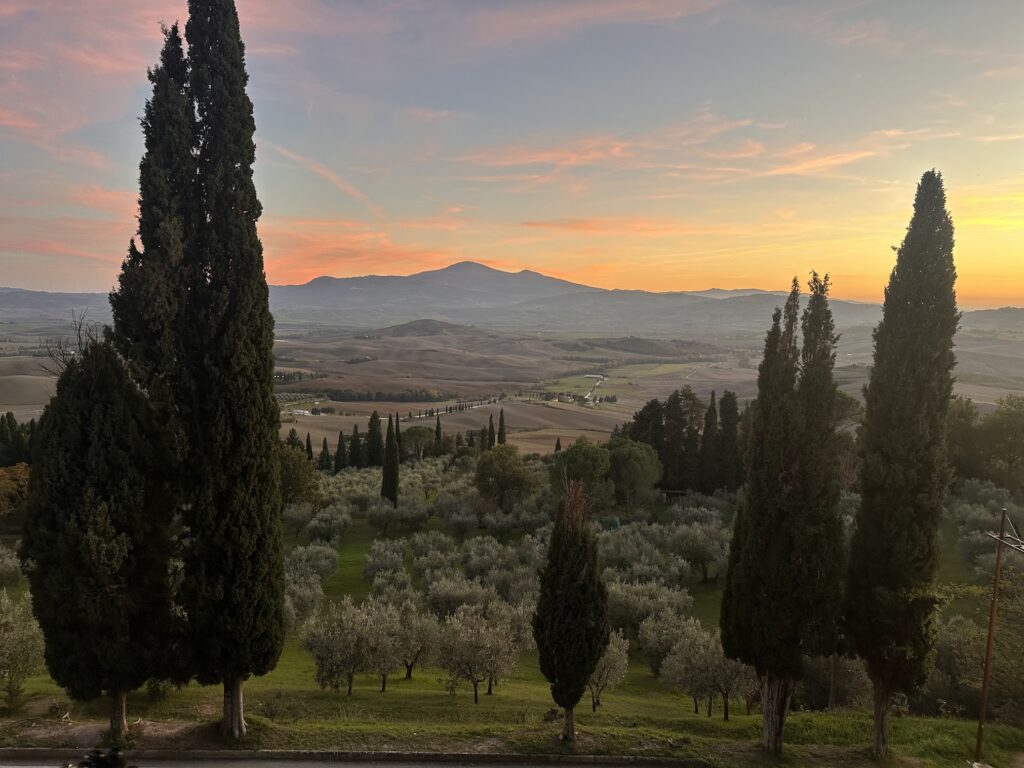
Stay or Day-Trip?
– Stay: A night in Pienza or an agriturismo on the valley floor lets you experience the soft light on ancient farmhouses. Sunrise and sunset here are unforgettable.
– Day-Trip: Both towns lie within a 30-minute drive of Montalcino or Montepulciano, making them ideal for half-day or full-day excursions.
Culinary Highlights
- Pienza’s Pecorino Cheese: Sample young, semi-aged, and spicy aged varieties at the town’s cheese shops.
- Crostini di Fegatini: Chicken-liver crostini paired with a glass of Vernaccia di San Gimignano or a crisp Vernaccia from nearby.
- Bruschetta al Pomodoro: Classic tomato-basil topping using locally grown tomatoes.
3. Montalcino, Montepulciano & Scansano: Wine Country Heaven
Three Pillars of Tuscan Wine
For many travelers, southern Tuscany towns conjure images of Brunello di Montalcino, Vino Nobile di Montepulciano, and Morellino di Scansano. Each appellation has its devoted following and unique character.
- Montalcino is synonymous with Brunello: powerful, ageworthy reds made from 100% Sangiovese. The fortress hilltop town provides sweeping vineyard views.
- Montepulciano yields Vino Nobile—velvety reds with hints of cherry and leather. Its medieval streets swell with enologists and oenophiles.
- Scansano, the birthplace of Morellino, offers a fresher, more accessible style, often paired with the hearty dishes of the Maremma.
Stay or Day-Trip?
– Stay: Allocate two nights—one in Montalcino and one in Montepulciano (or one centrally between all three) to fully appreciate wine-country sunsets and cellar tours.
– Day-Trip: While possible from Siena or Grosseto, wine lovers should linger. Harvest festival weekends (September–October) especially merit multi-day stays
Culinary Highlights
- Bistecca alla Fiorentina: While more typical of Florence, many hilltop restaurants outside the city serve a leaner, local version.
- Pici al Ragù di Cinta Senese: Thick hand-rolled pasta with a sauce made from Cinta Senese pork.
- Local Olive Oil Tastings: Extra-virgin oils from hillside groves, often served with crusty bruschetta.



4. Bagno Vignoni & Bagni San Filippo: Hot Springs & Wellness
Where Thermal Waters Flow
Southern Tuscany’s volcanic substrata gift travelers two unmissable thermal spots:
- Bagno Vignoni centers around its 16th-century thermal pool in the main piazza. Though you can’t bathe in the piazza itself, nearby Spa centers and terraces use the same warm, mineral-rich waters.
- Bagni San Filippo features free, sculptural white limestone formations and natural pools—great for adventurous travelers and photographers. We went off course on our way to Florence and stopped here with our kids and they loved it. It was a nice break from the city hustle and bustle. Here is a short video about our Bagni San Filippo pit stop.
Stay or Day-Trip?
– Stay: Book a night at a thermal spa hotel in Bagno Vignoni. Enjoy evening soaks beneath candlelight and early-morning steam mist.
– Day-Trip: You can combine either hot-spring stop with a half-day in Pienza or a winery tour; parking is plentiful, and trails connect to nearby hilltop chapels.
Culinary Highlights
- Local Herb-Infused Dishes: Many spa restaurants use wild herbs grown around the springs.
- Acquacotta: Traditional “boiled water” soup with vegetables and stale bread—a rustic delicacy near the springs.
- Light Lunches: Spa menus often feature fresh salads, grilled vegetables, and clear broths to complement the detoxifying waters.
5. Saturnia: Cascate del Mulino & Hot-Water Waterfalls
Instagram-Famous Free Hot Springs
The Cascate del Mulino near Saturnia are the poster child of free hot waterfalls in Tuscany. The milky-blue pools cascade over travertine terraces at a constant 37 °C (98 °F). This place trends on Instagram, but we didn’t enjoy it as much. When we went, there were two couples mainly making it out, and it was weird. Also, the wind was a bit chilly, and the water was low. It was not a sunny day so perhaps if we had gone when it was slightly warmer, it would have been a better experience.
Stay or Day-Trip?
– Stay: A night at a local agriturismo or farmhouse lets you access the falls both before sunrise (when crowds vanish) and after sunset (for a romantic soak).
– Day-Trip: Public parking is free but fills early in summer. Plan to arrive before 9 AM or after 6 PM for the best experience.
Culinary Highlights
- Frittura di Pesce: Mixed fried local fish served in nearby restaurants—crispy, fresh, and best with a squeeze of lemon.
- Bianco d’Alessano Wine: A lesser-known white from the Maremma that pairs beautifully with fish dishes.
- Honey-Glazed Cantucci: Almond biscotti drizzled with local honey—perfect after a warm soak.
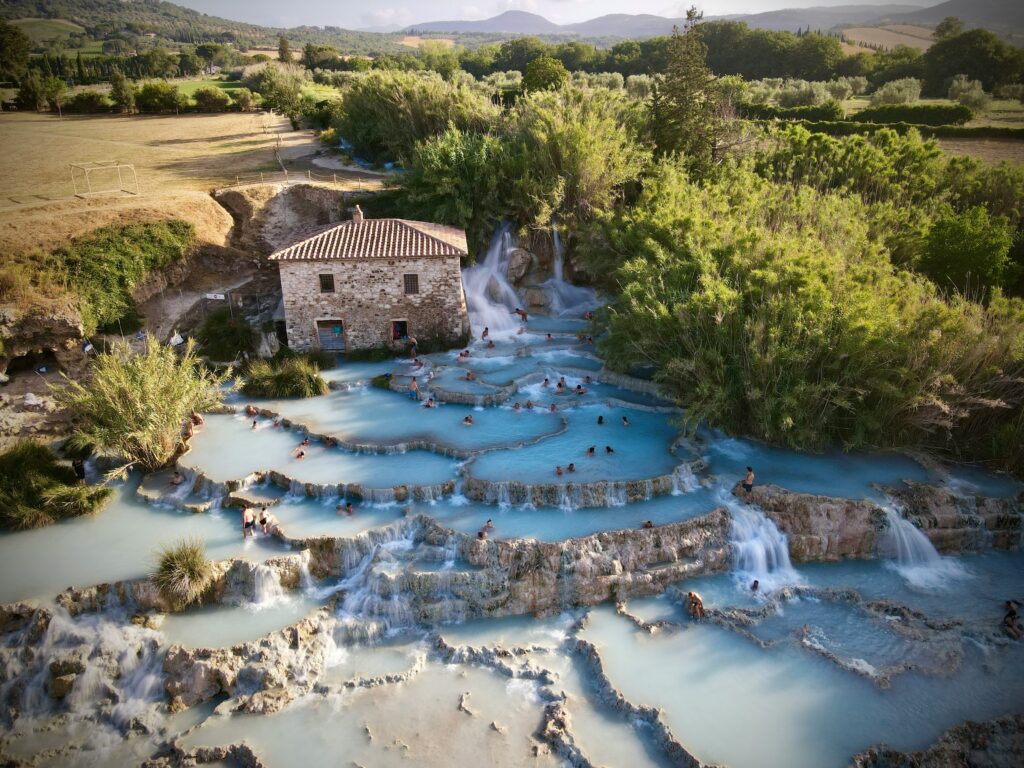
Practical Travel Tips & Transportation For Visiting Southern Tuscany Towns
Getting Between Southern Tuscany Towns
- Car Rental: For maximum flexibility—ideal for hopping from Val d’Orcia to the Maremma coast. Watch for ZTL (limited traffic) zones in historic centers; reserve parking in advance at popular spots like Bagno Vignoni.
- Regional Buses & Trains: Trenitalia lines connect Siena–Chiusi–Orvieto, but many hilltop villages rely on CTT and Tiemme buses. Check seasonal schedules, as winter services can be sparse.
- Guided Tours & Shuttles: Many wineries and agriturismi offer private transfers or group shuttles—especially useful if you plan multiple tastings in one day.
- Biking & Walking: Val d’Orcia trails and the tufa-town valleys are cycling-friendly; gravel-bike rentals are available in larger towns.
Best Time to Visit Southern Tuscany Towns
- Late April–Early June
- Weather: Mild, daytime highs 18–24 °C (64–75 °F), wildflowers in bloom
- Crowds: Light to moderate; most attractions and agriturismi fully open
- Perks: Harvest of asparagus and artichokes; fewer tourists on local roads
- Weather: Mild, daytime highs 18–24 °C (64–75 °F), wildflowers in bloom
- September
- Weather: Warm, daytime highs 22–28 °C (72–82 °F); sea and pool temperatures still pleasant
- Crowds: Thinner than July–August; harvest festivals in full swing
- Perks: New-release wines, grape-stomping events, olive-harvest pre-season
- Weather: Warm, daytime highs 22–28 °C (72–82 °F); sea and pool temperatures still pleasant
- October–Early November
- Weather: Cooler (15–20 °C/59–68 °F), crisp mornings, occasional rain
- Crowds: Very light; ideal for hot-spring visits and truffle season
- Perks: Chestnut and mushroom festivals, dramatic autumn foliage
- Weather: Cooler (15–20 °C/59–68 °F), crisp mornings, occasional rain
Local Events & Festivals in Southern Tuscany
- Carnevale di Viareggio (Late January–February)
Though technically in northern Tuscany, it’s the country’s most famous carnival—worth a winter detour if you’re in the region. - Brunello Estate & Wine Festival (Montalcino, July)
Exclusive tastings of new-release Brunello, vineyard tours, and sunset concerts in the fortress courtyard. - Cacio e Pepe Festival (Pienza, Mid-August)
Celebrates the town’s signature pecorino cheese with pasta-making demonstrations, tastings, and live music. - Medieval Pageants (Sovana & Sorano, June–September)
Historical reenactments, costumed parades, archery contests, and local guild showcases. - Morellino di Scansano Festival (Scansano, Late June)
Street stalls pouring Morellino alongside Maremma street food, plus cooking demos and live concerts. - Chestnut Festival (Various Hill Towns, October–November)
Local sagre where you can sample roasted chestnuts, marrons glacés, and wild-boar sausages. - Olive Oil New Press Celebrations (Late October–November)
Tasting events at agriturismi and frantoi (olive mills) to sample the season’s first extra-virgin olive oil.
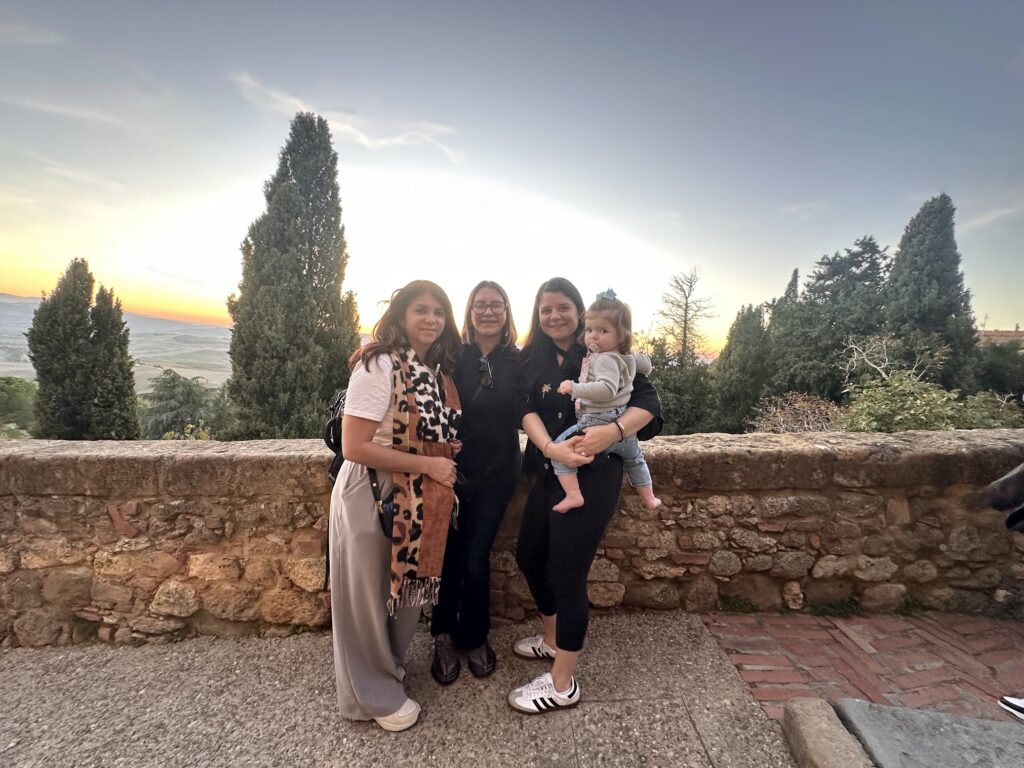
Where to Stay: Agriturismi, Boutique Hotels & Farmhouses
- La Locanda di Sovana (Sovana)
- Charming rooms in a converted medieval convent
- On-site restaurant serving local specialties like wild-boar ragu
- Guided walks to nearby Etruscan sites
3. Castello Banfi – Il Borgo (Montalcino)
- Luxury castle suites within a working Brunello estate
- Spa facilities and curated wine-tasting experiences
- Evening concerts and cellar-door tours
4. Terme di Saturnia Spa & Golf Resort (Saturnia)
- Five-star amenities adjacent to the Cascate del Mulino
- Thermal pools, golf course, and holistic spa treatments
- Shuttle service to the free hot-water waterfalls
5. Ospitale di San Galgano (Chiusdino)
- Unique abbey-style accommodations near Bagni San Filippo
- Peaceful cloistered courtyard and vaulted-ceiling suites
- Easy access to hiking trails and thermal springs
6. Agriturismo Le Caggiole (Scansano)
- Family-run vineyard estate producing Morellino di Scansano
- Rustic rooms and olive-grove walks
- Wine-pairing dinners under the stars
7. Agriturismo Il Rigo (Pienza)
- Hilltop farmstead with panoramic valley views
- Organic vegetable garden and cheese-making demonstrations
- Mountain-biking and trekking routes from the property

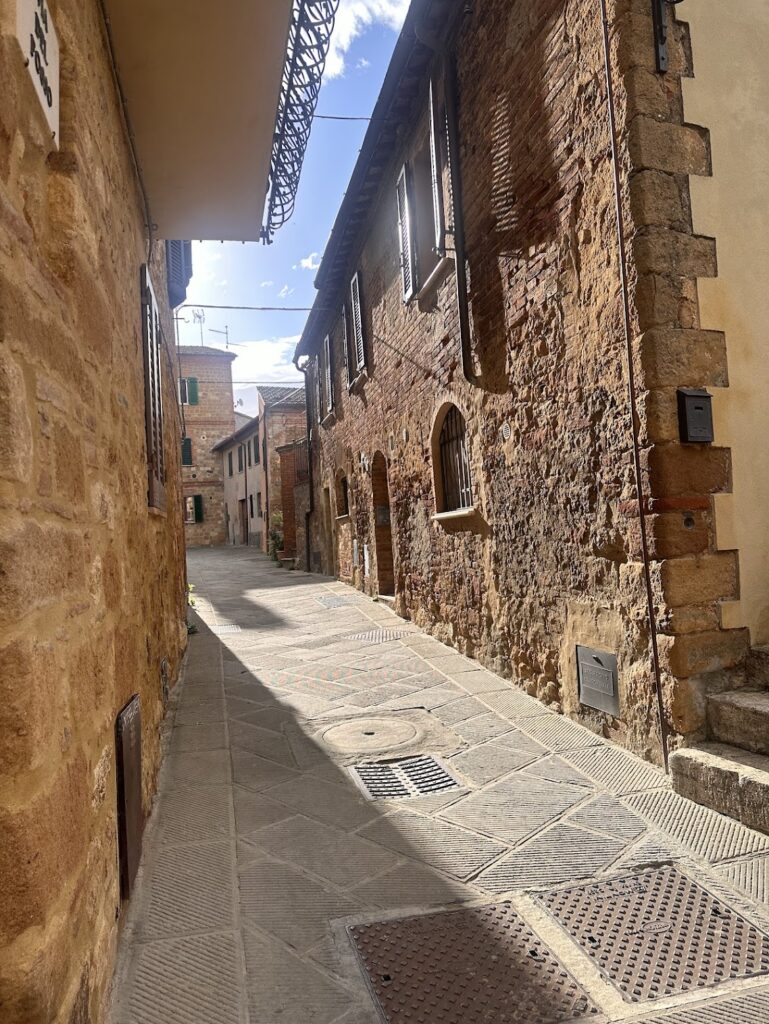
Sample 7-Day Itinerary for Southern Tuscany Towns
- Day 1: Pitigliano → Sovana → Sorano
Morning in Pitigliano’s Jewish Ghetto; lunch in Sovana; sunset in Sorano’s fortress. - Day 2: Pienza & Val d’Orcia
Pecorino tastings; Horti Leonini gardens; sunset at the Madonna di Vitaleta viewpoint. - Day 3: Montalcino
Brunello winery tours; sunset aperitivo atop the fortress. - Day 4: Montepulciano
Vino Nobile tastings; underground wine cellars; evening concert in Piazza Grande. - Day 5: Bagno Vignoni & Bagni San Filippo
Thermal spa treatments; rustic lunch; nature walks to the springs. - Day 6: Saturnia Cascate del Mulino
All-day waterfall soaks; farm-to-table dinner at a local osteria. - Day 7: Scansano & Maremma
Morellino di Scansano tastings; coastal detour to the beaches near Castiglione della Pescaia.
Conclusion
Southern Tuscany towns deliver an alluring blend of medieval architecture, UNESCO landscapes, thermal wellness, and world-renowned wines. By choosing the right mix of hilltop villages (Pitigliano, Sovana, Sorano), rolling-hill charms (Pienza, San Quirico), wine capitals (Montalcino, Montepulciano, Scansano), and hot-spring havens (Bagno Vignoni, Bagni San Filippo, Saturnia), you’ll craft a journey that’s as restorative as it is inspiring.
Follow our practical tips on transportation, timing, and festivals, and rest assured, you’re tapping into everything people search for when they look up southern Tuscany towns. Pack your bags, book that agriturismo, and prepare for an Italian escape unlike any other. Furthermore, check out Tuscany Romantic Towns. Also, check out Tuscany Day Trips from Rome.

![The Best Beaches in Catania for Families [2025] 19 The Best Beaches in Catania for Families [2025]](https://fusetravels.com/wp-content/uploads/2024/01/karol-chomka-9sj3HVs9KT0-unsplash-768x432.jpg)

